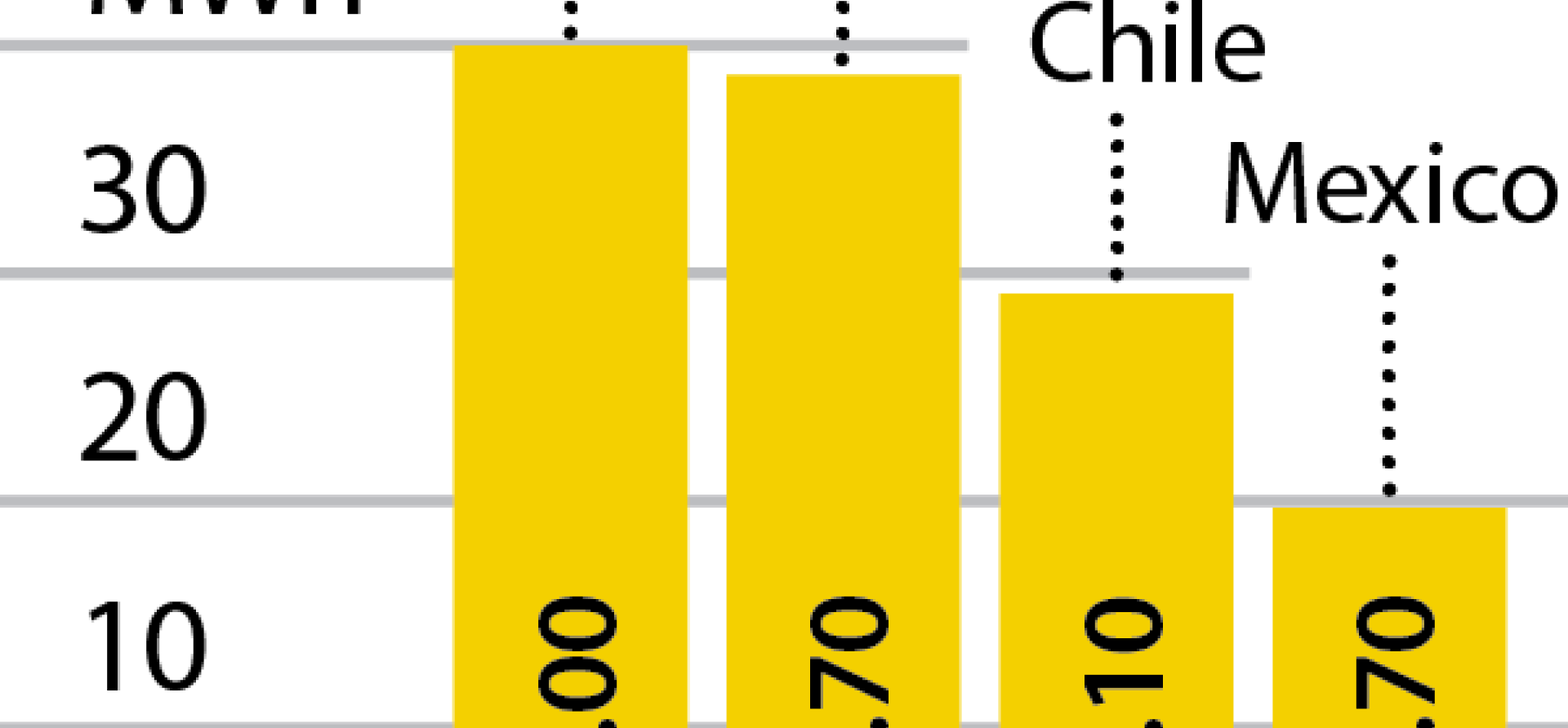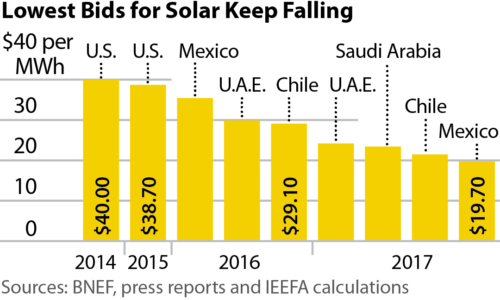IEEFA Update: A Tipping Point Is Coming, and Fast

 We’ve just posted a research brief explaining through a telling combination of charts (and some written analysis) how the fast-growing uptake of wind and solar around the world continues to shape electricity-generation trends.
We’ve just posted a research brief explaining through a telling combination of charts (and some written analysis) how the fast-growing uptake of wind and solar around the world continues to shape electricity-generation trends.
The phenomenon is unfolding across diverse groups of markets that include ones in Latin America, the Middle East, and the U.S.
We note in the brief— “Cheap Renewables Are Transforming Global Electricity Business”—how installations of wind and solar totaled almost 155 gigawatts (GW) last year, actually outpacing coal-fired power plant development.
We also note how lowest bids for solar dropped a remarkable 50 percent from records set in 2014 and 2015, as solar power continued its long-established expansion.
While country-specific factors in pricing, taxes, inflation-indexation, subsidies and policies prevent clean inter-country comparison, the general trend is common to all of the markets we looked at, driven by ongoing technological improvements, plus gains in economies of scale. This movement if evident raw materials costs, manufacturing, procurement, construction, and debt and equity financing.
New investment decisions favor renewables for their commercial merit, their lower public-health and environmental costs, and the diversity of supply they bring to the grid.
The transformation we see under way creates momentum for a further shift from fossil fuel dependency by large utilities such as ENGIE in France, NTPC in India, NextEra in the U.S., and ENEL in Italy. Significantly, ENEL, which only founded its green power division in 2008, now derives half of its generating capacity globally from 39.4 gigawatts of renewable generation.
THIS SHIFT ACROSS THE UTILITY INDUSTRY STANDS TO GAIN STEAM as economies of scale kick in and prices fall further, compounded by technological improvements, the availability of cheap financing, and the proliferation of new clean-energy policies.
Last year saw record low solar costs broken not once, but four times, and over a short period of time, raising questions as to whether it is realistic to expect this remarkable trend to continue. But momentum is widespread, and not only gaining in a few sun-drenched markets like Saudi Arabia.
While solar is grabbing headlines for its recent performance, the prize for the world’s cheapest electricity generation in 2017 went to wind. In November, Enel Green Power made the lowest-ever bid for electricity generation in a Mexican wind auction.
While wind’s recent cost fall-offs have not been as universally stellar as solar’s (mostly because wind is a more mature sector), wind power prices have still been precipitous over the past couple years, particularly in countries with the most favorable conditions and policies.
Recent records have been set in Canada, India and the U.S. in on-land wind generation, and trends toward pricing in the offshore wind markets of Germany and the U.K. have surprised everyone.
NextEra Energy, a U.S. company among the most forward-looking and successful utilities on this front globally, projects that by the mid-2020s, renewables will produce electricity cheaper than that produced by thermal power plants.
We see France, India, Japan, South Korea, Taiwan and the U.S. all rapidly scaling up new renewable energy technology after a decade of pre-commercial viability investment by Germany, Denmark and the U.K.
Meanwhile, a growing number of governments have decided to part ways with fossil-fuel power generation. New investment decisions favor renewables because of their commercial merit, their lower external costs (on public health and the environment) and the diversity of supply they bring to the grid.
Renewables are not yet the least costly option in every market, but the pace of change demonstrates that a tipping point toward a new energy economy is coming, and fast.
Read our full brief here: “Cheap Renewables Are Transforming Global Electricity Business”
Kashish Shah is an IEEFA research associate. Tim Buckley is IEEFA’s director of energy finance studies, Australasia.
RELATED ITEMS:
IEEFA Update: In U.S. Utility NextEra, a Template for Electricity-Generation Transition
IEEFA Op-Ed: In 2018, Expect Clean Energy to Be Cheap Energy
















